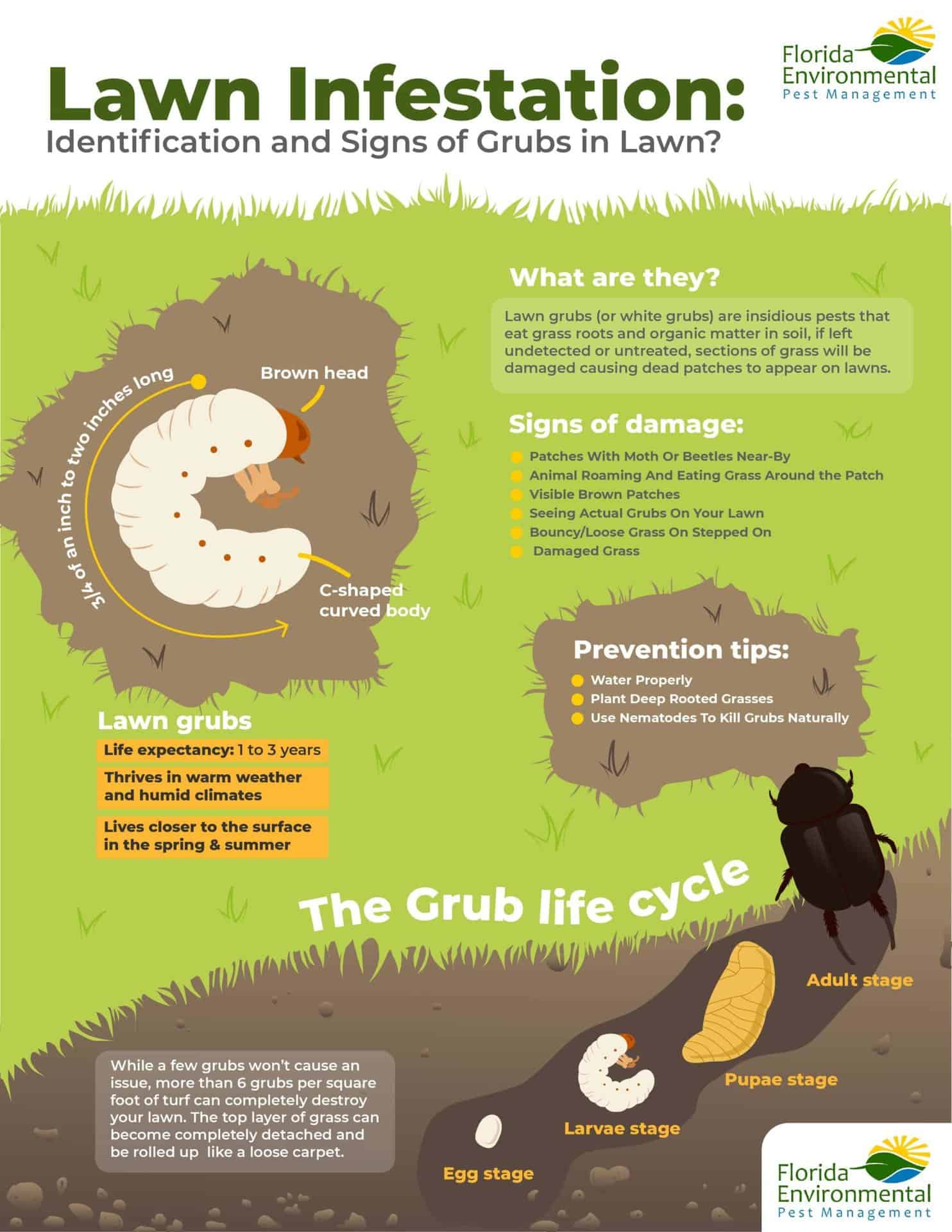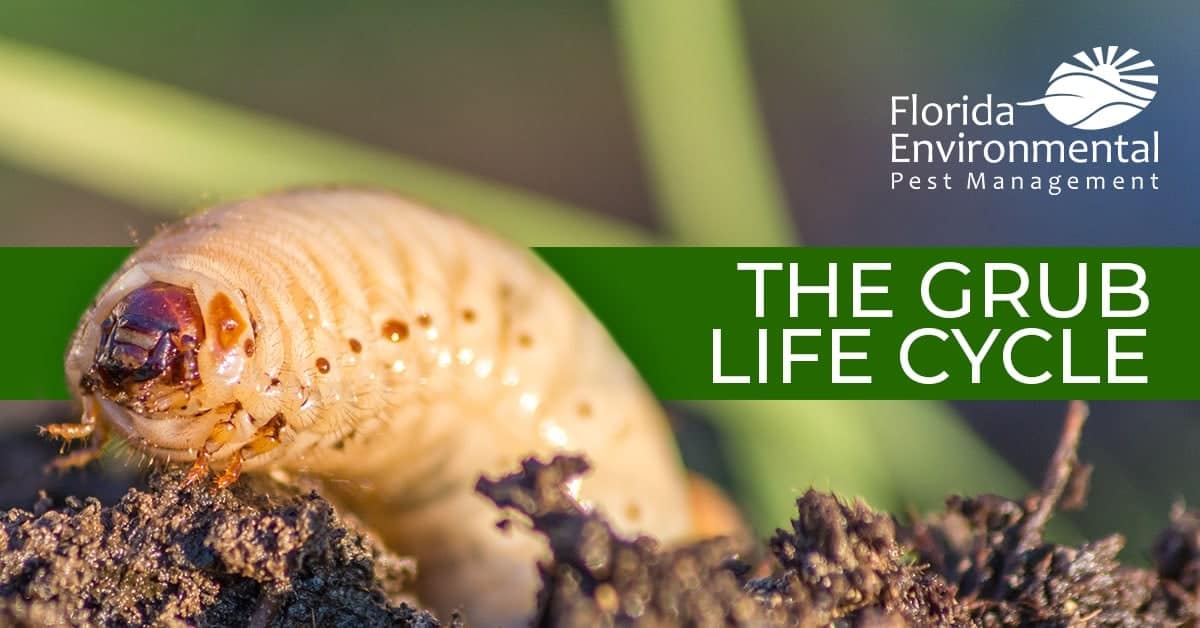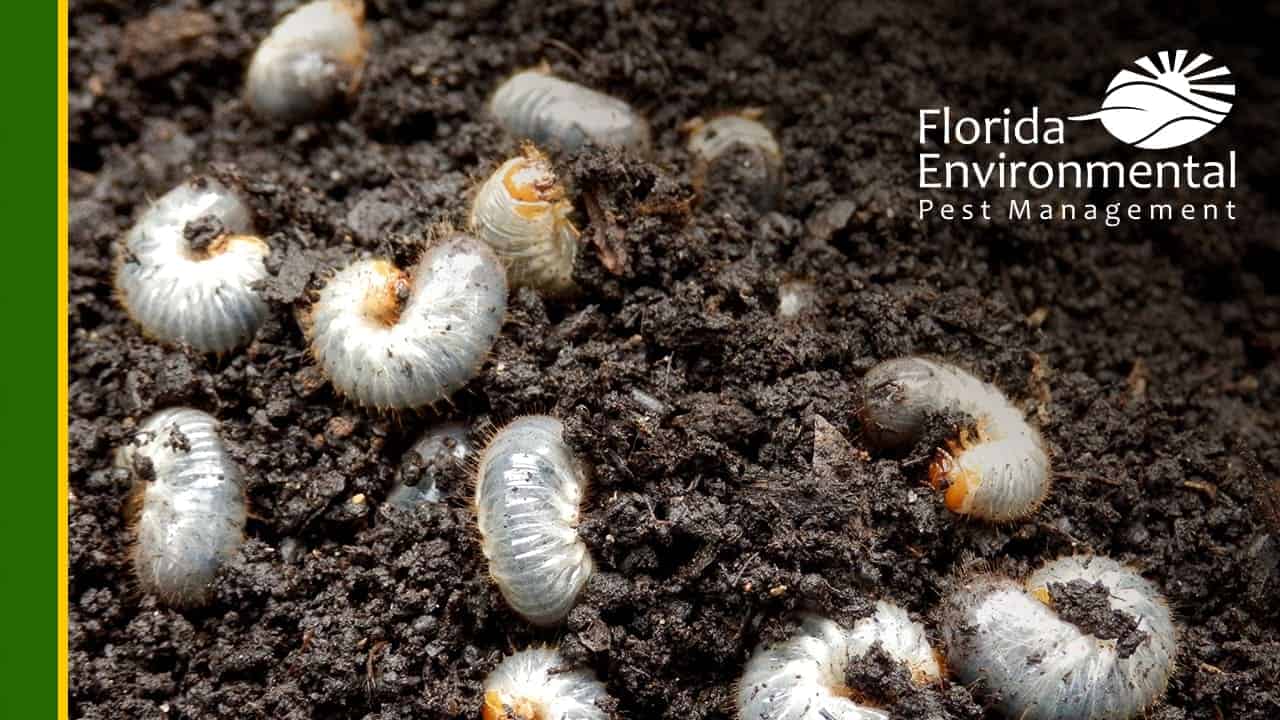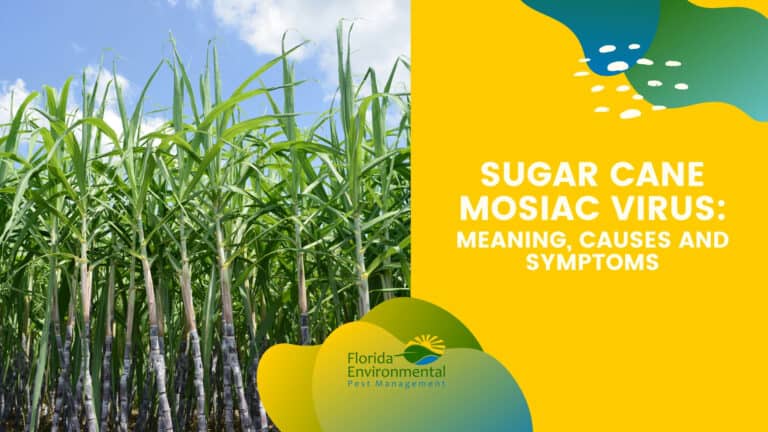Lawn grubs or white grubs are insidious pests that eat grassroots and organic matter in the soil. If their activity goes undetected and untreated, sections of grass will be damaged, causing dead patches to appear on lawns. Over time, grubs can cause the grass to turn brown and detach from the soil completely as they destroy the roots holding the grass in place, allowing sections of the lawn to be rolled up like a loose carpet.
What Are Grubs?
Lawn grubs or white grubs are the larvae of several species of beetles, including Japanese beetles and June beetles. They can be anywhere from ¾ of an inch to two inches long. Lawn grubs have white bodies with brown heads and curl up into a distinctive c-shape when at rest.
Once hatched from beetle eggs, lawn grubs live underground and eat away at grassroots and organic matter in the soil, causing the grass to die.
The Grub Life Cycle
White grubs go through four life stages to become beetles and have a life expectancy of one to three years, depending on the beetle species. Each stage is defined by a unique shape, color, and different feeding habits. White grubs will also live in different areas of your yard depending on their stage and tend to thrive in early summer.
Egg Stage
Adult beetles dig shallow holes in the soil where they lay their eggs. Depending on the grub species, the egg-laying period occurs between June and August.
Larvae Stage
Three are three larvae stages. Once the eggs hatch, tiny larvae begin feeding on grassroots close to the surface. The feeding continues for several months into late fall as the larvae grow in the second and third stages of their development. These mature grubs feed more aggressively, causing more damage.
In the winter months, the grubs burrow into the soil dormant until the following spring. When spring returns, the larvae surface and feed on the roots before moving on to the next stage.
Pupae Stage
The pupae life stage takes place once the larvae feeding has finished. The insects become pupae, burrowing down in the soil once more, where they remain for several weeks.
Adult Stage
A few weeks after completing the pupae stage, the final transformation is complete, and adult beetles emerge as they dig their way out of the soil. Adult beetles move up to the surface between June and August, bringing this cycle to a close.

Signs of Grubs in Lawn
Several signs of grubs in a lawn and symptoms point to possible lawn grub damage, including seeing patches of brown grass appear on the otherwise green turf. Other signs include seeing birds digging holes or other increased animal activity on your lawn.
Patches With Moth Or Beetles Near-By
Because different species of grubs commonly mature into beetles and moths, seeing beetles or moths flying around your yard near-dead spots of grass may be a sign of a grub problem.
Though seeing them is not a guarantee of an issue, it can be an early warning sign, as moths and beetles look for warm and healthy patches of turf to lay their eggs in, so it is worth keeping an eye on their activity.
Animal Roaming And Eating Grass Around the Patch
Increased animal presence and activity in your yard near a dead patch of grass is another sign of a grub problem. Animals such as birds, skunks, moles, and raccoons eat lawn grubs and dig them in the soil.
Visible Brown Patches
Visible brown patches in your yard can also be a sign of grub activity, as they eat and damage the root structure of the grass, causing it to die.
Seeing Actual Grubs On Your Lawn
Seeing actual grubs on your lawn can also point to a problem. This can happen due to raccoons, skunks, moles, or birds digging for them, or if the soil was moved when gardening.
Bouncy/Loose Grass On Stepped On
An early sign of a stressed lawn is that the ground feels bouncy or loose underfoot, similar to the feeling of walking on freshly laid sod. Lawn grubs eat grassroots and organic soil, destroying the structure intended to hold the turf firmly in place.
Damaged Grass
Irregular patches of damaged or thinning grass can also indicate an issue. Another telltale sign is that these dead patches don’t perk up, even after they’ve been watered.
How Bad Are Grubs For Your Lawn?
A grub problem will cause brown spots and patches of thinning turf, and these patches will gradually increase in size. Often grass damaged by these insects will pull out easily at the roots.
While a few grubs won’t cause an issue, more than six grubs per square foot of turf can destroy your lawn. The top layer of grass can become completely detached and be rolled up like a loose carpet.
Methods To Prevent Grubs
IPM Program
An integrated pest management (IPM) program—also known as integrated pest control (IPC)—uses a combination of methods to control garden pests and prevent grub problems. Best practices include responsible pesticides, regular monitoring, and preventative measures.
Organic
Keeping your soil healthy with the right kind of organic lawn care can eliminate grubs. Milky spore granules are an all-natural solution to eliminating grubs from Japanese beetles. Best used as a preventative treatment that can take a few years to implement, milky spore granules can protect the soil of lawn turf for up to 10 years, making it an effective long-term solution.
Nematodes are predatory worms that kill grubs, making them another chemical-free solution to grub control. The nematodes are combined with water and then applied to the soil, which is most effective in the early fall.
Grub Prevention Tips
Lawn grub damage can be avoided. Here are several lawn care tips that can prevent your yard from being infested with these insects in the first place.
Water Properly
The first step in natural grub prevention is to water your lawn properly. Because grubs thrive in moist, warm environments, it is best not to water your lawn daily. It is ideal for your lawn to have time to dry out between watering sessions while also giving it enough water to stay healthy.
Plant Deep Rooted Grasses
Planting deep-rooted grass is another great way to prevent grub damage. This grass has a deep root system and can be watered once a week- even in hot, dry weather, making it a low-maintenance choice as a bonus.






